In the past few weeks, my wife and I have made our yearly journey to the “lower 48” to visit family and friends. This year, we made a 4-day stop to see our friends Bill and Anne Albrecht who are living as caretakers at the unknown and beautiful Archer Taylor Preserve in the mountains outside of Napa, California. This little jewel of a place provided my needed warm-climate-biodiversity-fix which fills a void that opens after too many months of cold Alaska winter. The humid, moonlit nights found me listening to tree frogs and a mating pair of spotted owls, checking out scorpions hunting in log piles, and catching a northern pacific rattlesnake for relocation from the front steps of their home to a more secluded spot. I was in heaven, especially since this rare tract of redwood and native oak forest held something that I have become addicted to; being in the presence of something more powerful than I, in this case mountain lions. The need to preserve populations of large, potentially dangerous predators will be a common theme of my writing on this website. I moved to Alaska 16 years ago because I wanted to live near wolves and bears.
I remember when I was a young boy living in the mountains of North Carolina, I had a book about the animals of the Appalachians. I would carry this book into the deep forests near our home, lay in the moss underneath a rhododendron canopy and read about the denizens of the hazy ridges and coves such as the black bear, the bobcat and the gray fox. The last chapter spoke of the animals that had been hunted to extinction in the region since the turn of the century. I longed to be taken back in time so that I could listen to the howls of eastern timber wolves as they hunted elk and bison, or to catch a glimpse of a painter, the local term for cougar, watching me from atop a boulder. Something big and powerful was missing from those forests, though I believed the ghosts were still present. These were my broken hearted fantasies at 5 years of age. I do the same thing today whenever I am not in a totally intact wilderness. I cannot fathom anyone not wanting predators in wild spaces. Without them, the emptiness is overwhelming to me.
I spent a lot of time during the summers when I was very young on my Grandparent’s farm in the swamps of coastal South Carolina where my mom was raised. My grandfather, Papa, would sit on a swing hanging from a low branch of an enormous pecan tree. I would climb in his lap and he would feed me peaches from a nearby orchard and tell me stories, always about local wildlife because that is the only thing I cared about. I was mesmerized by tales of giant rattlesnakes, cottonmouths and alligators. When he carved the farm out of the wilderness in the 1930’s, red wolves and cougars (he called them panthers) still prowled the forests, and he had seen them. In the 1980’s, it was still wild country. One night, a black bear tried to break into the sliding glass door and on another a screaming bobcat emerged from the forest and killed a dozen feral cats that lived around the house. A dark line of trees loomed on the horizon just beyond the cotton field. These “backwoods” were larger than life to me. It was a haunting wilderness ruled by wild animals. When I explored them, I felt as alive and alert as at any time in my life. I loved it there.
Bill and I sat in a grassy meadow in the preserve listening to piliated woodpeckers and red tailed hawks stake out their territories with aggressive calls. Bill’s three year old daughter, Hallo Rose, named for a bear filled bay in Katmai where Bill and I have worked together for a decade guiding brown bear viewing trips, asked us where the mountain lions sleep during the day. Bill lifted her up and pointed to a craggy ridge a mile above us. “Up there in those rocks, way up there is where the lions and the coyotes live. They have babies in caves up there and at night they come down to hunt deer.” I watched Hallo’s dreamy stare as she stored this answer in her ever growing bank of local knowledge. This was a powerful moment. At this impressionable early age, this little girl was lucky enough to feel that tingle in her soul that I treasured so much, right in her backyard.
A few years ago, I went back to the Long’s farm in South Carolina to ground my memories. My eyes teared for the first time in many years as I realized it was all gone. An endless spread of golf courses and residential homes had replaced the great swamps and loblolly pine forests. The ‘backwoods” were now neighborhoods and shopping centers. The bears and bobcats and alligators were all gone and with them the character and integrity of the country. All I saw was a wasteland.
I feel lucky that I had enough early exposure to wildness to instill a sense of its value deep in my psyche. It invigorates me to know that Hallo Rose will understand when she is my age, but I fear that this is an exceedingly rare occurrence today. It is hard to put into clear words why this tingling feeling that comes with the presence of mountain lions and bears and wolves is so important to me, but it is.

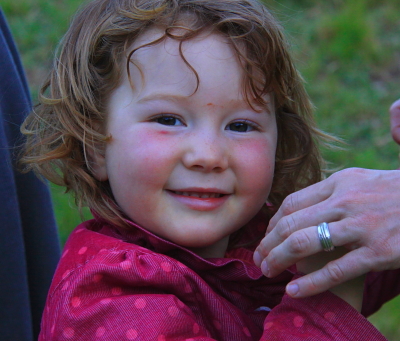
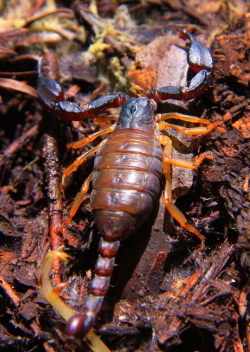
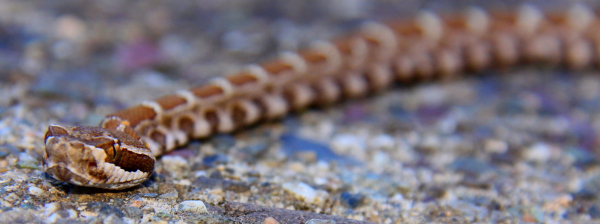

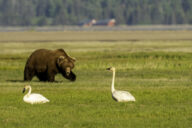

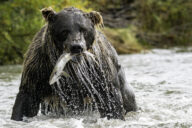
12 Comments
Great job Brad. I felt the same way when I went to show South Fork, CO to some family….It broke my heart to see the big name businesses there….gone were the mom and pop shops that I grew up with….
Brad, that is a beautiful article. I loved tramping around in the woods and fields as a kid, now they are developed. And I loved the picture of Hallo Rose–of course I am pretty biased. Bill’s mom and Hallo Rose’s granny
Great job, Brad. Pat and I know whereof you speak. Even though Colorado Springs is a medium sized town, we have Black Bears, Mountain Lions, Bob Cats, Foxes, Mule deer, Coyotes and many smaller critters all over the place in town. We regard places that have wildlife in them as more complete and natural than when man has rubbed them out. Maybe that’s why Pat and I live where we do, volunteer at our zoo and travel to where we do. Africa, Galapogos, Hudson’s Bay, Katmai, Denali, Yellowstone, Tetons, Australia and Glacier make us complete.
We loved the article Brad. As the maternal grandparents of Hallo Rose and Ziggy we are totally unbiased about the kids…………Thanks for sharing your perspective of the ATP with all of us. We can understand where your passion for the outdoors began. Your childhood sounded idyllic and the perfect place to develop your passion for nature.
John & Kathy, Anne’s parents and grandparents to Hallo Rose and Ziggy
This is so beautiful, Brad! I am so proud of the way you are living your life and really inhabiting each moment. You have always been who you are today, a unique, caring, intelligent person who stands for so much more than himself. Even when you were a student at Charlotte Country Day School, you stood out as someone who cared deeply about nature and who was not going to follow the herd of other kids into a career in finance! Thanks so much for sharing this article with me. I am proud to have shared in your education.
Stephanie Wilder
Maybe you should write a book, Brad! I can empathize. All my childhood desert haunts are paved over as well. So sad! And it sounds like intensive predator control is coming to the Kenai Peninsula–http://redoubtreporter.wordpress.com/2011/04/20/hunting-rules-change-to-boost-moose-—-board-of-game-tweaks-kenai-peninsula-regs/
Healthy ecosystems need the great predators to maintain diversity and keep the system functioning in a healthy, dynamic equilibrium. Keep up the good work!
Brad,
Beautiful. In knowing you, the article had even more meaning. I also feel there is a wild nature within our DNA and when we lose the wilderness in the world , we have also lost a part of ourselves. See you in August. bobbie
Cool to see your prose Brad! Check out this band/singer JJ Grey & Mofro, esp. the album Lochloosa – he signs serious gut blues about losing a treasured southern landscape to sprawl. Blackwater is another good album. cool dude, I think you guys would get along 😉 cheers!
Great article, Brad! You write beautifully and should write a book sometime! I know what you mean about your “tingling feeling”…..mine is a “deep sense of reverence and awe” that “touches my soul” when I’m in the presence of wildlife in their natural environment and/or in pristine landscapes. As always, thanks so much for sharing your experiences, videos, and now this blog site with me!
Brad,
Could imagine myself looking up to where the wildcats live in a beautiful CA preserve. I felt a cool breeze through your words, well appreciated since I am in Big Bend NP with photo friend, hoping to see big cats, maybe black bear – did have a moment with a beautiful bobcat, lots of birds, and Big Bend landscapes. It is really hot here so thanks for the breeze. Great writing…….k&t
Keep it up, Brad. You’re doing a great job of getting the word out about the value of wilderness and biodiversity. As you know, I too am watching a wilderness disappear and I cherish its remnants in my own backyard. I found a little saprophytic orchid last summer standing in a patch of surviving green spruces in the middle of beetle kill and I’m hoping to find it again this summer. Thanks for sharing your story. Jane
Beautiful moving article, Brad. I share your feelings about wild places where I am happiest. They are rapidly disappearing and many young people today are not at all interested in nature. Too bad there are not more people like you in this world. Why don’t you write a book?